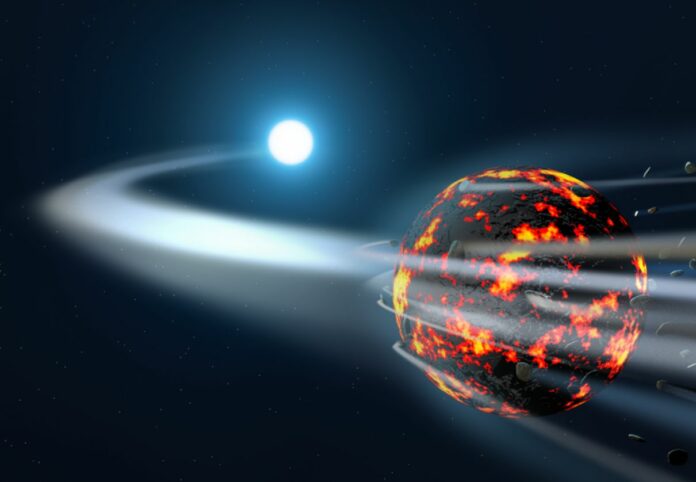A team of scientists discovered that planet formation in our early Solar System began far earlier than previously thought, with planet building blocks expanding at the same time as their parent star.
A study of some of the earliest stars in the universe reveals that the building blocks of planets like as Jupiter and Saturn form as a young star matures.
New research, published in the journal Nature Astronomy, contests the accepted belief that planets only originate when a star reaches its full size and implies that stars and planets ‘grow up’ simultaneously.
The research, which was led by the University of Cambridge, changes how we think about how planetary systems, like our own Solar System, came to be. It could help solve one of astronomy’s biggest mysteries.
“We have a pretty good idea of how planets form, but one outstanding question we’ve had is when they form: does planet formation start early, when the parent star is still growing, or millions of years later?” says Dr Amy Bonsor from Cambridge’s Institute of Astronomy, the study’s first author.
Bonsor and her colleagues looked at the atmospheres of white dwarf stars, which are the old, dim remains of stars like our Sun, to try to answer this question. They did this to learn more about the building blocks of planets.
Scientists from the University of Oxford, the Ludwig-Maximilians-Universität in Munich, the University of Groningen, and the Max Planck Institute for Solar System Research in Gottingen were also involved in the study.
“Some white dwarfs are amazing laboratories, because their thin atmospheres are almost like celestial graveyards,” adds Bonsor.
Normally, telescopes are unable to observe the interiors of planets.
However, a particular group of white dwarfs, referred to as “polluted” systems, have heavy elements like calcium, magnesium, and iron in their ordinarily pure atmospheres.
These substances must have originated from tiny objects like asteroids that were left over during planet formation and collided with the white dwarfs before igniting in their atmospheres.
Therefore, the interiors of those fragmented asteroids can be explored through spectroscopic investigations of contaminated white dwarfs, providing astronomers with a clear understanding of the conditions under which they evolved.
It is generally accepted that planets begin to take shape in the protoplanetary disc that circles a young star. This disc is mostly composed of hydrogen and helium, along with minute ice crystals and dust particles.
The current dominant theory for planet formation postulates that smaller dust particles adhere to one another, growing to form larger and larger solid bodies.
Some of these larger bodies will continue to accrete and form planets, while others, like the asteroids that collided with the white dwarfs in the current study, will remain as asteroids.
The team examined spectroscopic data gathered from 200 neighbouring white dwarfs in dirty galaxies.
According to their analysis, the composition of these white dwarf atmospheres can only be explained if many of the original asteroids had once melted, causing heavy iron to sink to the core and lighter components to float on the surface.
The differentiation process is what gave rise to the Earth’s iron-rich core.
“The cause of the melting can only be attributed to very short-lived radioactive elements, which existed in the earliest stages of the planetary system but decay away in just a million years,” adds Bonsor. “In other words, if these asteroids were melted by something which only exists for a very brief time at the dawn of the planetary system, then the process of planet formation must kick off very quickly.”
According to the findings, the early-formation picture is probably accurate, which means Jupiter and Saturn had plenty of time to expand to their present sizes.
“Our study complements a growing consensus in the field that planet formation got going early, with the first bodies forming concurrently with the star,” adds Bonsor. “Analyses of polluted white dwarfs tell us that this radioactive melting process is a potentially ubiquitous mechanism affecting the formation of all extrasolar planets.
“This is just the beginning – every time we find a new white dwarf, we can gather more evidence and learn more about how planets form. We can trace elements like nickel and chromium and say how big an asteroid must have been when it formed its iron core. It’s amazing that we’re able to probe processes like this in exoplanetary systems.”
Source: 10.1038/s41550-022-01815-8
Image Credit: Amanda Smith
